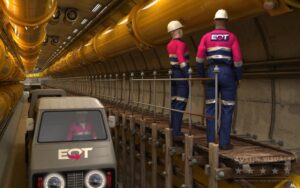
Welcome to the captivating world where creativity meets technology – the realm of Engineering & Technical Animation. Have you ever marveled at the seamless movements of your favorite animated characters or the breathtaking landscapes of a digital world? Behind every mesmerizing animation sequence lies the expertise of technical animators, the unsung heroes who infuse life into pixels and polygons. In this exploration of What Does a Technical Animator Do, we’ll journey through the intricate blend of artistry and engineering that defines the realm of technical animation, uncovering the magic behind the scenes of your favorite films, video games, and immersive experiences. So, buckle up as we embark on a thrilling adventure into the heart of animation innovation.
What is Technical Animation?
Before we delve into the specifics of what a technical animator does, let’s first establish what technical animation is all about. At its core, technical animation blends the principles of traditional animation with cutting-edge technology and engineering concepts to create dynamic and believable movements within digital environments.
Think of technical animation as the bridge between art and science. While traditional animators focus on bringing characters and objects to life through motion, technical animators specialize in the mechanics behind these movements. They utilize various tools, software, and programming languages to simulate realistic physics, interactions, and behaviors within animated scenes.
Animation Team
Now that we grasp what technical animation entails let’s shine the spotlight on the unsung heroes of the animation industry – technical animators themselves. These individuals possess a unique blend of artistic talent, programming skills, and a deep understanding of animation principles.
Technical animators are the problem solvers of the animation pipeline. They collaborate closely with animators, riggers, and software developers to overcome technical challenges and ensure that characters and objects move convincingly within the digital world. Whether creating complex character rigs, developing custom animation tools, or optimizing performance, technical animators play a crucial role in bringing the director’s vision to life.
What Does a Technical Animator Do?
Now that we’ve met the protagonists of our story let’s dive into the nitty-gritty of a technical animator’s daily workflow. While the specifics may vary depending on the project and studio, here are some common tasks and responsibilities you can expect to find in the realm of technical animation:
Rigging and Character Setup
One of the primary responsibilities of a technical animator is rigging – the process of creating a digital skeleton for characters and objects. Technical animators design and implement complex rigs that allow animators to manipulate various body parts, facial expressions, and props with precision and ease. This involves creating control systems, setting up deformations, and fine-tuning the rig’s behavior to achieve realistic movements.
Physics Simulation
In many animation projects, realism is key. Technical animators utilize physics simulation techniques to simulate the behavior of objects within the digital environment accurately. Whether it’s simulating cloth dynamics, fluid simulations, or realistic hair and fur movements, technical animators employ advanced algorithms and software to achieve lifelike results.
Animation Tools Development
Technical animators are also adept at developing custom animation tools and scripts to streamline the animation workflow. From automating repetitive tasks to creating specialized plugins for animation software, technical animators empower animators and artists with the tools they need to unleash their creativity efficiently.
Performance Optimization
In the fast-paced world of animation production, optimizing performance is paramount. Technical animators work closely with software developers and engineers to optimize animation rigs, assets, and effects for real-time playback and rendering. This involves reducing memory overhead, improving rendering efficiency, and implementing level-of-detail (LOD) systems to ensure smooth playback across different platforms.
How Do I Become a Technical Animator?
So, you’re intrigued by the world of technical animation and wondering how to embark on this exciting career path? While there’s no one-size-fits-all roadmap, here are some essential steps to help you kickstart your journey as a technical animator:
Master the Fundamentals
Start by honing your skills in traditional animation principles, such as timing, spacing, and weight. Understanding the fundamentals of animation is essential, regardless of whether you’re pursuing a technical or artistic path.
Learn Rigging and Programming
Familiarize yourself with rigging techniques and software, such as Autodesk Maya, Blender, or Houdini. Additionally, learned programming languages commonly used in animation pipelines, such as Python and Mel scripting. Having a solid foundation in rigging and scripting will set you apart as a technical animator.
Build a Strong Portfolio
Create a portfolio showcasing your technical animation skills, including character rigs, animation tests, and any custom tools or scripts you’ve developed. Your portfolio is your calling card in the animation industry, so make sure it highlights your talents and creativity.
Network and Collaborate
Networking is key in the animation industry. Attend industry events, join online communities, and collaborate with fellow animators and developers on projects. Building connections and collaborating with others enhances your skills and opens up career advancement opportunities.
Best Techincal Animation Services – Austin Visuals
At Austin Visuals 3D Animation Studio, we specialize in high-quality technical animation services, transforming complex ideas into visually compelling animations. Whether it’s engineering simulations, product visualizations, medical animations, or industrial processes, our expert team ensures precision and clarity. With cutting-edge tools like Autodesk Maya, Blender, and Houdini, we bring realism to digital environments through rigging, physics simulations, and animation tool development. Our tailored solutions help businesses communicate intricate details with clarity and impact.
Our Services:
- Visual FX
- Post Production
- 3D Animation
- 2D Animation
- Drone
- Videography
- App & Software Development
- Motion Graphics
- Scripting
- Marketing Consultation
- Game Development
- Visual Solutions
Ready to elevate your project? Contact Austin Visuals today and experience animation that moves your audience!
Conclusion
As we wrap up our exploration of the fascinating world of engineering and technical animation, I hope you’ve gained a deeper appreciation for the role of technical animators in bringing digital worlds to life. From rigging characters to simulating physics and developing animation tools, technical animators are the unsung heroes behind the seamless magic of animation. If you want to read more about “Best Engineering Animation Services,” just visit our blog page today!
So, whether you’re a budding animator looking to dive into the technical side of animation or a seasoned professional seeking to expand your skill set, remember that the world of technical animation is ripe with endless possibilities and opportunities for innovation. With dedication, creativity, and a sprinkle of technical wizardry, you, too, can embark on an exciting journey into the realm where art and technology collide.
Ready to bring your project to life with captivating animation? At Austin Visuals, our team of skilled technical animators specializes in breathing realism and dynamism into digital worlds. Elevate your storytelling with our cutting-edge animation services today and leave your audience spellbound by the magic of technical animation. Reach out to us today!
FAQs: What Does a Technical Animator Do
What software do technical animators use?
Technical animators commonly use industry-standard software such as Autodesk Maya, Blender, and Houdini, leveraging their robust toolsets to create dynamic character rigs, simulate physics, and develop custom animation tools.
What skills are essential for a technical animator?
A technical animator requires a blend of artistic talent and technical proficiency, including expertise in animation principles, rigging, scripting languages like Python, and a deep understanding of software such as Maya or Blender.
How does technical animation differ from traditional animation?
While traditional animation focuses on creating character movements and storytelling, technical animation delves into the mechanics behind these movements, employing physics simulations, rigging, and scripting to achieve realism and interactivity within digital environments.
What industries utilize the services of technical animators?
Technical animators are in demand across various industries, including film, video games, advertising, architectural visualization, and virtual reality, where their skills are crucial for creating immersive and engaging experiences.
What role does a technical animator play in the animation pipeline?
As a vital part of the animation pipeline, technical animators collaborate with artists, animators, and developers to solve technical challenges, optimize performance, and ensure that characters and environments move convincingly within digital worlds, ultimately bringing the director’s vision to life.







